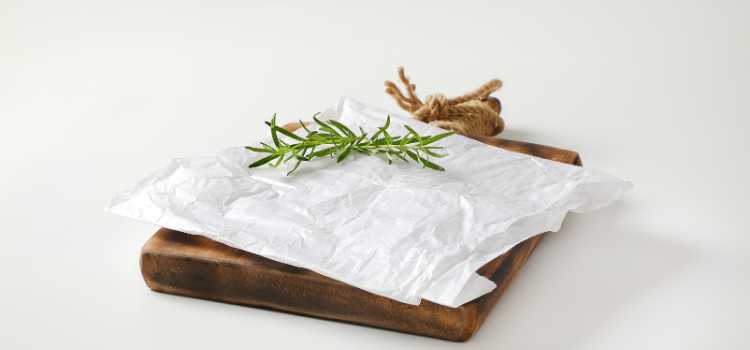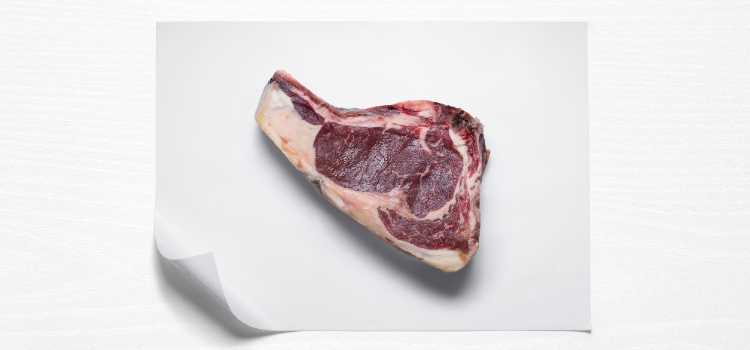As an Amazon Associate, I earn from qualifying purchases

In the culinary world, butcher paper has long been a staple for food preparation and storage. Traditionally, it serves as the unsung hero in butcher shops and kitchens, wrapping cuts of meat for storage, handling, and even smoking. With its utilitarian charm, butcher paper has found its way into homes and professional kitchens alike.
Its versatility and practicality are unmatched, making it a popular choice for those who appreciate both its functionality and aesthetic appeal. However, as more people experiment with this classic kitchen tool, the question arises: can butcher paper be safely used in the oven? This article explores the properties, safety, and potential benefits and drawbacks of using butcher paper in your culinary endeavors.
Properties of Butcher Paper
Butcher paper is a type of kraft paper that is typically thicker and more durable than regular paper, designed to withstand the rigors of wrapping and storing moist and greasy foods. Its composition includes a combination of wood pulp fibers, which contribute to its strength and resistance to tearing.
The paper’s ability to resist moisture and grease is one of its key attributes, making it ideal for wrapping meats and other foods that might otherwise seep through regular paper. The thickness of butcher paper varies, with some versions being treated with coatings to enhance moisture resistance or to provide a slight barrier against grease.
This characteristic is particularly useful when considering its application in cooking, as it helps to contain juices and flavors without breaking down easily in moist conditions.
Safety Considerations
When considering using butcher paper in the oven, understanding its temperature limits is crucial. Generally, butcher paper can withstand temperatures up to around 400°F (204°C), but this can vary depending on the specific product and any treatments it might have received.
It’s essential to check the manufacturer’s guidelines to ensure you’re not exceeding the paper’s heat tolerance, as surpassing these limits could result in the paper catching fire or producing smoke. One must also differentiate between regular butcher paper and those that are specially treated for higher heat applications, such as parchment paper.
- Regular butcher paper lacks the silicone coating found in parchment paper, which provides added heat resistance and non-stick properties. Using untreated butcher paper at high oven temperatures can lead to charring, smoke, or even combustion, posing a risk to both your food and your safety.
Benefits and Drawbacks of Using Butcher Paper in the Oven
Benefits of Using Butcher Paper in the Oven:

Moisture Retention:
- Butcher paper effectively holds in moisture, keeping meats juicy and tender during cooking.
- It creates a gentle steaming effect, enhancing the flavors without needing extra fats or oils.
Aesthetic Appeal:
- Serving food wrapped in rustic butcher paper adds a charming touch to your presentation.
- It’s a popular choice for barbecues and casual gatherings, elevating the dining experience.
Drawbacks to Consider:
Limited Heat Resistance:
- Butcher paper is not suitable for high-temperature cooking, which can restrict its use in certain recipes.
Risk of Ignition:
- There’s a greater risk of the paper igniting or charring compared to alternatives like parchment paper or foil, making it less reliable for various cooking methods.
Tips for Selecting and Using Butcher Paper Safely
To safely incorporate butcher paper into your cooking routine, choosing the right type of paper is essential. Look for paper labeled specifically for oven use, or those that mention high heat tolerance. Papers with a wax or plastic coating should be avoided, as these can melt and release harmful chemicals when exposed to heat.
When using butcher paper in the oven, always place it on a baking sheet rather than directly on the oven rack. This ensures even heat distribution and prevents direct contact with heating elements, reducing the risk of ignition. Keeping the oven temperature below the paper’s maximum heat tolerance is critical to maintaining safety.
For those who prefer to stay on the side of caution, butcher paper is still an excellent tool for wrapping foods for grilling or smoking, where temperatures are more manageable and controlled. Its ability to maintain moisture and impart a smoky flavor makes it a favorite among barbeque enthusiasts.
Conclusion
Butcher paper, with its humble origins and versatile nature, remains a valuable asset in both home and professional kitchens. While its use in the oven requires careful consideration of temperature limits and safety guidelines, it offers unique benefits, particularly in preserving moisture and enhancing flavors in certain cooking methods.
By understanding its properties and taking the necessary precautions, you can safely explore the potential of butcher paper in your culinary creations. Whether you choose to use it in the oven or stick to its traditional applications, butcher paper invites a touch of rustic charm and practicality that enhances the cooking experience.
FAQ
Can you use butcher paper in an oven?
Yes, butcher paper can be used in the oven but with caution. It is heat-resistant up to about 400°F (204°C). Ensure to check the manufacturer’s guidelines and avoid direct contact with heating elements to prevent the risk of burning or smoke.
What temperature is butcher paper safe?
Butcher paper is generally safe for use up to 400°F (204°C). Exceeding this temperature can lead to charring or ignition. Always verify the specific temperature rating on the packaging to ensure safety and prevent potential hazards during cooking.
Is all butcher paper heat resistant?
Not all butcher paper is heat-resistant. Some are treated for moisture resistance rather than heat, while others may have coatings unsuitable for high temperatures. Always check product labels for heat resistance specifications before using butcher paper in cooking environments like ovens.
Is butcher paper the same as baking paper?
No, butcher paper and baking paper are different. Baking paper, or parchment paper, is coated with silicone to be non-stick and heat-resistant, ideal for baking. Butcher paper, typically untreated, is thicker and used primarily for wrapping and storage, with limited heat resistance.
As an Amazon Associate, I earn from qualifying purchases